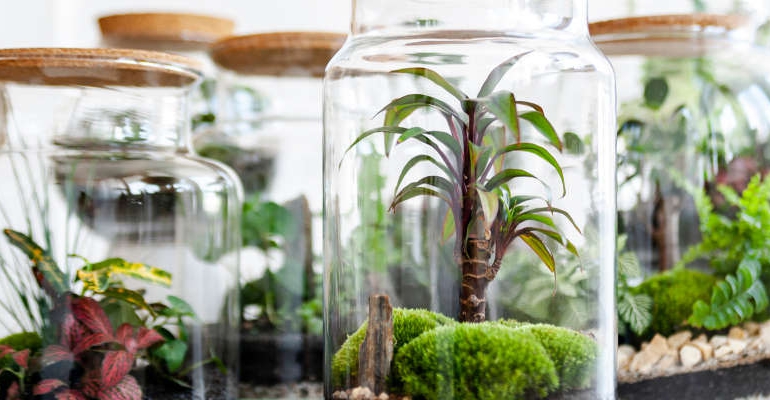
This winter, garden and nature enthusiasts can bring the outdoors inside with a terrarium. Learn how to make your own with Sara Whatley, and add a delightful addition to your home
Hold a forest in your hands. Create your own desert or be king of the jungle. How is this alchemy possible? How do you capture nature, tame her and beautifully encase her? You look to the world of terrariums.
There is something absolutely magical about these miniature glasshouses. They are transportive, mesmeric and very beautiful, encasing a world in glass that exists in its own sweet ecosystem. At their very best terrariums can play with the fabric of reality; meditate on one long enough and you might find yourself shrunk down and roaming around towering rock formations and lush ferns. Then on the turn of a penny you may be super sized and peering in on a miniature pine forest – what tiny animals lurk in the trees, what wind whips through their leaves, what birds sing in their boughs
Like nature herself, every terrarium is a unique creation. As the creator you guide the design, chose the planting scheme and the terrain and create the world you want to see displayed.
Then display it you must. In recent years the popularity of terrariums has enjoyed a resurgence and they are now really trendy in the interior design world. Let your large terrarium take centre stage in a room or fill the space with numerous smaller designs, each a little world of it’s own for the viewer to marvel at.
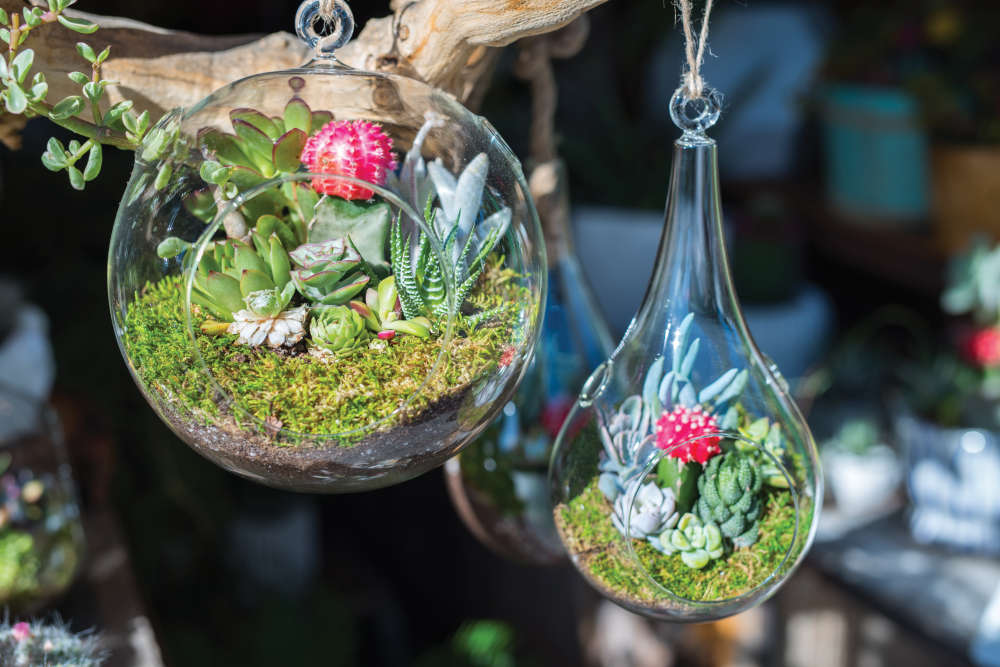
As the glass casing is available in an unlimited range of size and design, terraria can complement any space and any décor scheme. They add a sophisticated element of natural beauty to a room, as well as an air of mystique and magic too.
Discovered in Victorian London by amateur naturalist Dr Nathanial Bagshaw Ward in 1829, terrariums were originally known as Wardian cases and were more like mini glasshouses made of wood and glass. He was raising moth pupa in a sealed glass jar and noticed how well the ferns also thrived in the jar, something he had so far been unable to successfully grow outside, given the appalling air quality in industrial London at the time.
The Wardian cases became very popular among scientists, allowing them to observe plants in their natural habitats and successfully transport plants across the globe. Gradually their popularity grew to keen gardeners and further as well.
Over time the Wardian case evolved into what we now know as the terrarium: a fully or partially enclosed glass case, which allows heat and light to enter and confine moisture. They are available in all shapes and sizes, and used for aesthetic rather than scientific reasons nowadays.
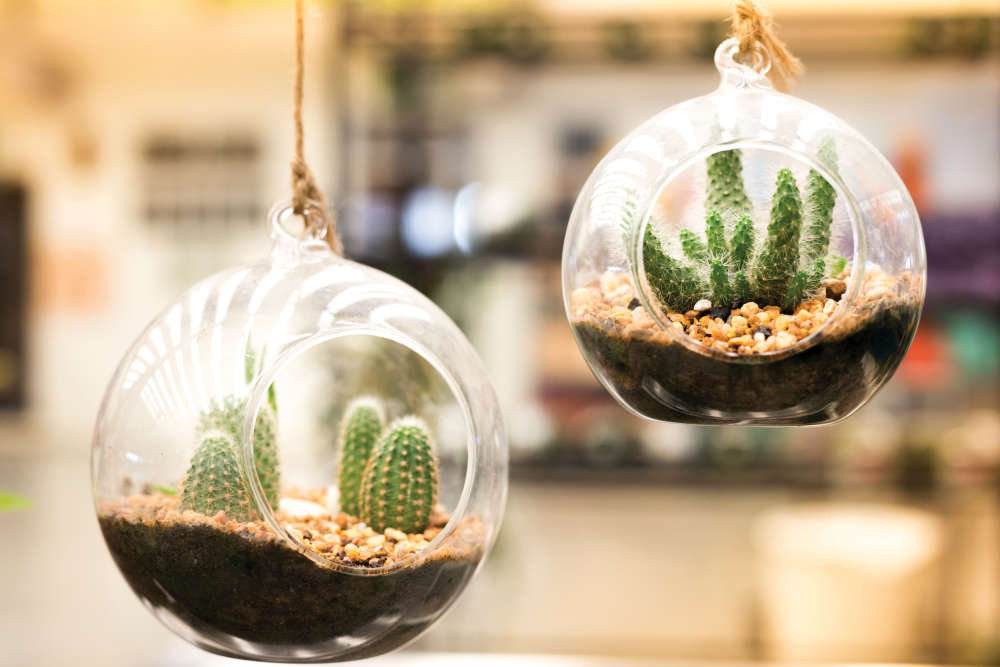
HOW TO
Making your own terrarium is a fun exercise in choice. Chose your container size (if it’s big enough to get your hand in it’s easier to make and maintain, otherwise you will need to use tools). Choose the shape and style, choose the plants to go inside, choose a theme, and finally choose individual extras such as coloured stones, figures and models to make your terrarium personal.
Once you have made your choice and gathered all the bits you need together, it’s actually quite straightforward to put a terrarium together. There are four main elements: gravel, moss, soil and plants.
- Start with a two-inch base layer of small stones or pebbles for drainage, then a quarter or half inch layer of activated charcoal (this keeps water fresh and helps prevent bacteria growing).
- On top of this you can put sheet moss, which helps prevent the compost falling through the stones. It also creates more visual interest in the layers and looks lovely.
- Next, pop in at least a two-inch layer of sterile potting soil (without added fertiliser) and shape the soil in dips and mounds to create interest for the planting.
- Lastly, add the plants. Decide on the placement before planting, and make sure any roots are not bound – tease and trim if needed. Gently plant each plant then add any extra individual touches such as rocks, figurines or shells. Gently water plants until just damp, not wet, and wipe the glass clean from any stray mud.
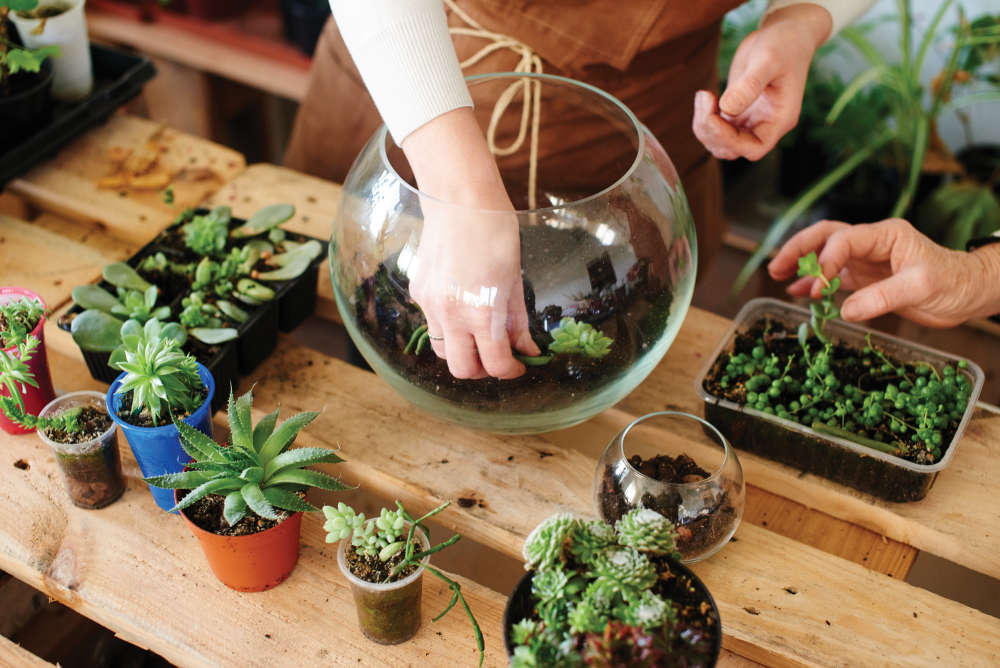
Terrariums thrive in filtered light, not direct sunlight which will bake the plants. Check every few weeks if the soil is dry and gently water as needed. If you have a closed terrarium make sure you take the top off at least once a month to clear the condensation and increase airflow.
OPEN OR CLOSED?
Terrariums can either be open or closed. Both have their advantages and disadvantages; it comes down to a personal choice and what you prefer. A closed terrarium creates it’s own microclimate, and plants best suited to this are heat and moisture loving plants such as ferns, mosses and orchids. Plants in a closed terrarium grow more slowly and also require less watering, but condensation and excess water may build up. Regularly take the lid off and make the drainage layers a little deeper to counteract this. Open terrariums give plants constant access to fresh air and it is easy to water, prune and change design. Plants will grow a little faster and may require more frequent pruning. Plants that thrive in open terrariums and dry conditions are succulents, cacti and air plants.
TOP TIPS
- Never use fertiliser in your terrarium. The natural decay of the potting mix provides plenty of nutrients for the plants
- Make sure plants stay healthy and don’t grow too big or touch the sides of the glass by trimming old, damaged or excess leaves
- Select visually interesting plants – different colours, shapes and textures
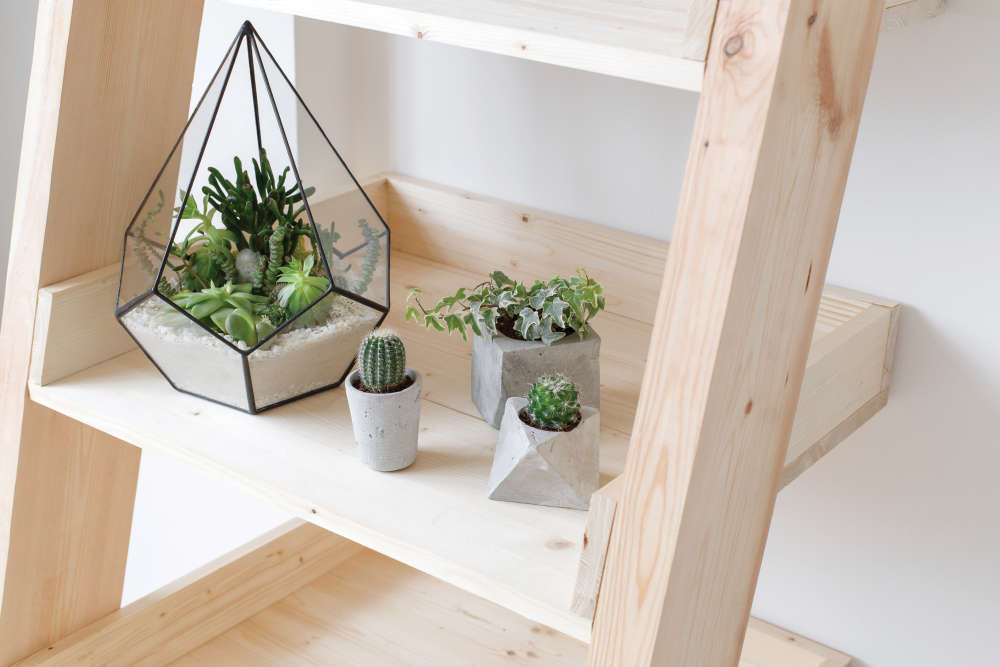

 Blooming Times: Happy Faces
Blooming Times: Happy Faces
 Blooming Times: Winter Sparklers
Blooming Times: Winter Sparklers
 Homes Extra: Restore, Repair, Recycle
Homes Extra: Restore, Repair, Recycle
 Home Style: A Scandi Winter's Tale
Home Style: A Scandi Winter's Tale
 Blooming Times: Winter Wonders
Blooming Times: Winter Wonders
 Home Style: Bold, Brave & Beautiful
Home Style: Bold, Brave & Beautiful
 Blooming Times: The Answer Lies in the Soil
Blooming Times: The Answer Lies in the Soil
 Blooming Times: Heavenly Hyacinths
Blooming Times: Heavenly Hyacinths
 Legendary Builds with Phoenix Construction Services
Legendary Builds with Phoenix Construction Services
 Blooming Times: Know Your Enemy
Blooming Times: Know Your Enemy
 Bespoke Dreams from Eridge Green Kitchens
Bespoke Dreams from Eridge Green Kitchens
 10 Hot Years: iFit Fires & Flues
10 Hot Years: iFit Fires & Flues
 Home Style: Bold Type
Home Style: Bold Type
 Blooming Times: The Sky's the Limit
Blooming Times: The Sky's the Limit
 Home Style: A Better Way of Life
Home Style: A Better Way of Life
 Homes Extra: Shed Space
Homes Extra: Shed Space
 Blooming Times: Top of the Pots
Blooming Times: Top of the Pots
 Kids Zone: Get the Kids Growing
Kids Zone: Get the Kids Growing
 Home Style: Pastures New
Home Style: Pastures New
 Homes Extra: Let There Be Light
Homes Extra: Let There Be Light